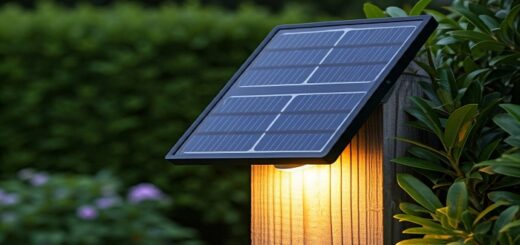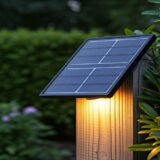The Incredible Drop in Solar Panel Prices
For years, solar energy was seen as a futuristic, albeit expensive, alternative to traditional fossil fuels. The idea of powering your home with sunshine was appealing, but the high cost of solar panels kept it out of reach for most homeowners. Fast forward to today, and the story is dramatically different. Solar panel prices have plummeted, making solar energy not just an environmentally friendly choice, but an increasingly affordable one. This article delves into the reasons behind this remarkable price drop, exploring the factors that have made solar power a viable option for a growing number of people and businesses.
A Look Back: The Early Days of Solar
To truly appreciate the current affordability of solar panels, it’s important to understand where they came from. The photovoltaic effect, the principle behind solar energy, was discovered in the 19th century. However, it wasn’t until the mid-20th century that solar cells began to be developed for practical applications, primarily in the space industry. These early solar panels were incredibly expensive, making them unsuitable for widespread use on Earth.
In the 1970s, the oil crisis sparked renewed interest in alternative energy sources, including solar. This led to increased research and development, but solar panel prices remained high. Throughout the late 20th and early 21st centuries, solar energy remained a niche market, primarily used in off-grid applications or by environmentally conscious consumers willing to pay a premium.
The Turning Point: Factors Driving the Price Drop
Over the past decade, the cost of solar panels has fallen dramatically. This decline can be attributed to a confluence of factors, each playing a crucial role in making solar energy more accessible:
Technological Advancements:
One of the primary drivers of the price drop has been continuous innovation in solar technology. Manufacturers have developed more efficient ways to produce solar cells, reducing material waste and manufacturing costs. Advances in silicon purification, cell design, and module assembly have all contributed to lower prices. For example, the development of thinner silicon wafers and improved cell architectures has allowed manufacturers to produce more powerful panels using less material.
Economies of Scale:
As demand for solar panels has increased, manufacturers have been able to scale up production, leading to significant economies of scale. Larger production volumes mean lower per-unit costs, as fixed costs are spread across a greater number of panels. This principle, often referred to as “Swanson’s Law,” states that solar panel prices tend to decrease by about 20% for every doubling of cumulative production volume.
Increased Competition:
The solar industry has become increasingly competitive, with manufacturers from around the world vying for market share. This competition has put downward pressure on prices, as companies strive to offer the most affordable products. The rise of Chinese manufacturers, in particular, has played a significant role in driving down global solar panel prices.
Government Support and Incentives:
Government policies and incentives have also played a crucial role in the growth of the solar industry and the subsequent price drop. Subsidies, tax credits, and feed-in tariffs have helped to stimulate demand for solar installations, creating a larger market and further driving down costs. Policies like the Investment Tax Credit (ITC) in the United States have been instrumental in making solar more affordable for homeowners and businesses.
Supply Chain Efficiencies:
Improvements in the solar supply chain, including logistics, transportation, and distribution, have also contributed to lower costs. Streamlining these processes has reduced overhead expenses and made it more efficient to get solar panels from the factory to the customer.
The Impact of Lower Prices
The dramatic drop in solar panel prices has had a profound impact on the energy landscape:
Increased Adoption:
Lower prices have made solar energy accessible to a much wider audience. Homeowners, businesses, and even large-scale utility projects are now increasingly turning to solar as a cost-effective and environmentally friendly energy source. This increased adoption has further fueled economies of scale, creating a positive feedback loop that continues to drive down prices.
Grid Parity:
In many regions, solar energy has reached “grid parity,” meaning that the cost of generating electricity from solar is equal to or less than the cost of purchasing electricity from the traditional grid. This milestone has made solar a financially attractive option for many consumers, even without government incentives.
Environmental Benefits:
The increased adoption of solar energy has significant environmental benefits. By reducing our reliance on fossil fuels, solar power helps to mitigate climate change, reduce air pollution, and conserve natural resources.
Job Creation:
The growth of the solar industry has created numerous jobs in manufacturing, installation, maintenance, and other related sectors. This has provided economic opportunities in many communities and contributed to the overall growth of the green economy.
Looking Ahead: The Future of Solar
The downward trend in solar panel prices is expected to continue, although perhaps not at the same rapid pace as in recent years. Ongoing research and development efforts are focused on improving panel efficiency, reducing manufacturing costs, and developing new solar technologies.
One area of focus is the development of perovskite solar cells, a promising new technology that has the potential to be even more efficient and less expensive than traditional silicon-based cells. Other research efforts are focused on improving the durability and lifespan of solar panels, as well as developing more efficient energy storage solutions.
The future of solar energy is bright. As prices continue to fall and technology continues to improve, solar is poised to play an increasingly important role in meeting global energy demands in a sustainable and affordable way. The sun is shining not only on our homes but also on a future powered by clean, renewable energy.
The Ripple Effect: Beyond the Panels
The price drop isn’t just about the panels themselves. It has spurred innovation and cost reductions in other areas related to solar installations:
Inverters:
These devices convert the direct current (DC) electricity generated by solar panels into alternating current (AC) electricity that can be used by homes and businesses. Advancements in inverter technology have led to increased efficiency and lower costs.
Mounting Systems:
Innovative mounting systems have made it easier and less expensive to install solar panels on rooftops and in ground-mounted arrays.
Software and Monitoring:
Sophisticated software and monitoring systems allow users to track their energy production and consumption, optimizing their solar investment. These technologies have also become more affordable and user-friendly.
Conclusion: A New Era of Energy
The remarkable decline in solar panel prices has ushered in a new era of energy. Solar energy is no longer a niche technology for the wealthy or the environmentally devout. It is a mainstream, cost-effective, and increasingly essential part of the global energy mix.
The factors that have driven this price drop. Technological advancements, economies of scale, increased competition. Supportive government policies are likely to continue to shape the solar industry in the years to come. As a result, we can expect solar energy to become even more affordable and accessible. Paving the way for a cleaner, more sustainable energy future. The sun, once a distant source of expensive power. Now offers a tangible and affordable solution to our growing energy needs.

















